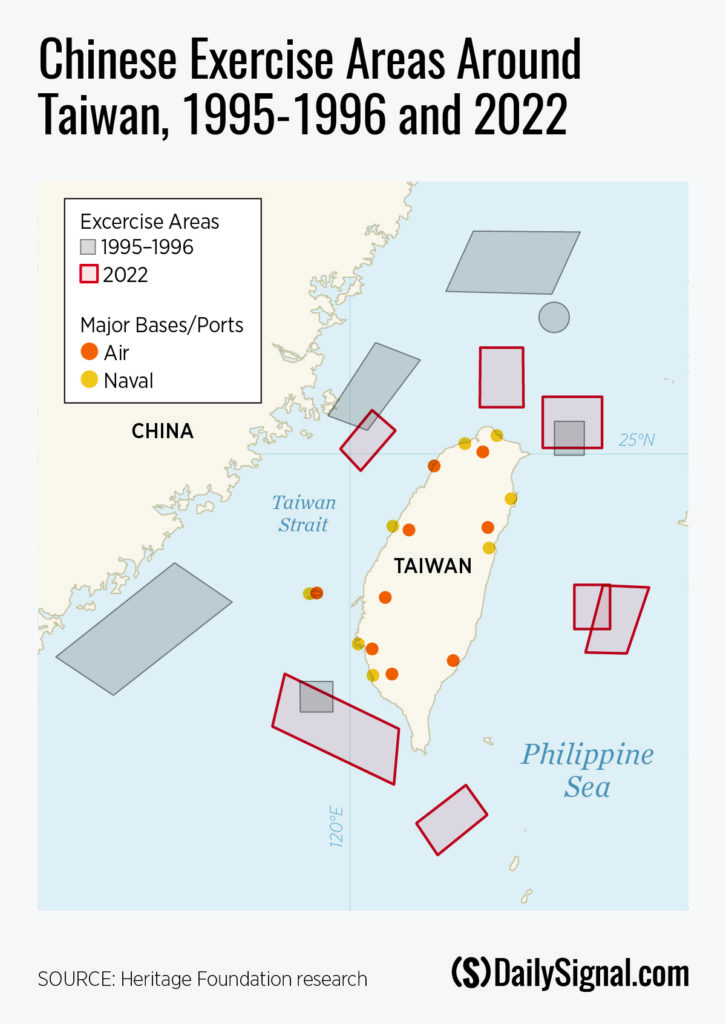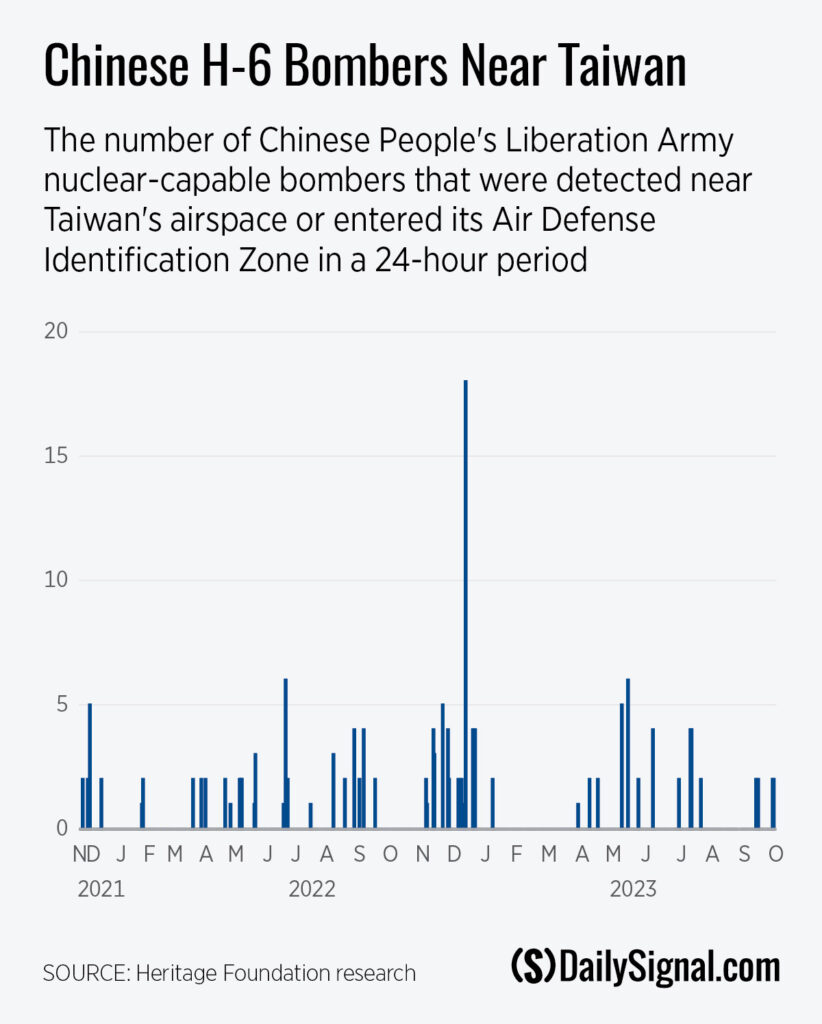China’s recent military activity around Taiwan reached new heights after Taiwanese President Tsai Ing-wen’s meeting in April with then-U.S. House Speaker Kevin McCarthy.
This increase in China’s military activity and long-term trends point to troubling times ahead, and our military and political leaders need to be ready.
With wars in Ukraine and Israel grabbing so much attention, it’s important that the United States not lose sight of Chinese military actions that unsettle the peace in Asia.
On Sept. 10, China began military drills beyond the first island chain into the Philippine Sea with a naval force of 20 vessels that included the aircraft carrier Shandong. During five days of exercises, the Chinese flew a total of 161 aircraft.
Notably, 86 of the planes that flew near Taiwan passed the median line—a significant if unofficial threshold separating the two contesting militaries. In recent days, the Chinese have again sent their aircraft carrier into these distant waters.
Why Is China Doing This Now?
China’s increase in military activity might have been a signal to world leaders attending the two-day G20 summit, which opened one day before China’s massive September drills began.
Interestingly, Chinese leader Xi Jinping skipped that summit even as his military upped the pressure on Taiwan.
Before the most recent September military exercises, the 10-day average for activity by Chinese naval vessels around Taiwan had been stable, at about three vessels a day. Since then, the average has remained at six vessels a day.
The average daily presence during China’s Sept. 10-14 exercises, of course, was much higher: 14 vessels. This sustained presence is inherently destabilizing as it enables the Chinese Communist Party’s military, called the People’s Liberation Army, or PLA, to ratchet up tensions quickly or worse, without much warning.
In the meantime, China’s increased military operations also exhausts and conditions Taiwan’s military responses for when Xi’s communist regime decides to turn an exercise into a prelude for attack.
Increasingly, China is confident about using its military to send strategic messages to the United States.
While Chinese Foreign Minister Wang Yi met Sept. 17 in Malta with U.S. national security adviser Jake Sullivan, China sent 103 planes near Taiwan. Of them, 40 crossed the median line in what was the largest display of China’s airpower within a single day in recent years.
Taiwan’s typically unfazed defense minister stated: “Our enemy’s recent movements are really quite abnormal.”
The message couldn’t be clearer: China wants the U.S. to understand its seriousness about Taiwan and is willing to risk escalation as the nation’s militaries operate in close proximity.
China’s increase in military activity might have been a signal to world leaders attending the two-day G20 summit, which opened one day before China’s massive September drills began.
Interestingly, Chinese leader Xi Jinping skipped that summit even as his military upped the pressure on Taiwan.
Before the most recent September military exercises, the 10-day average for activity by Chinese naval vessels around Taiwan had been stable, at about three vessels a day. Since then, the average has remained at six vessels a day.
The average daily presence during China’s Sept. 10-14 exercises, of course, was much higher: 14 vessels. This sustained presence is inherently destabilizing as it enables the Chinese Communist Party’s military, called the People’s Liberation Army, or PLA, to ratchet up tensions quickly or worse, without much warning.
In the meantime, China’s increased military operations also exhausts and conditions Taiwan’s military responses for when Xi’s communist regime decides to turn an exercise into a prelude for attack.
Increasingly, China is confident about using its military to send strategic messages to the United States.
While Chinese Foreign Minister Wang Yi met Sept. 17 in Malta with U.S. national security adviser Jake Sullivan, China sent 103 planes near Taiwan. Of them, 40 crossed the median line in what was the largest display of China’s airpower within a single day in recent years.
Taiwan’s typically unfazed defense minister stated: “Our enemy’s recent movements are really quite abnormal.”
The message couldn’t be clearer: China wants the U.S. to understand its seriousness about Taiwan and is willing to risk escalation as the nation’s militaries operate in close proximity.
Are These Actions Out of the Norm?
Typically, the Chinese conduct large military drills between July and September. But the latest drills also show China’s ability to operate large forces beyond the first island chain for longer for regional impact. (“First island chain” refers to island nations hemming in mainland China, stretching from Japan, Taiwan, Philippines, Malaysia, and Indonesia.)
Case in point, the aircraft carrier Shandong and 20 escort vessels recently operated in the Philippine Sea, which is near the Philippines—a U.S. treaty ally that is embroiled in territorial disputes with China.
This near-constant activity around Taiwan also provides some insight into a range of military options China is practicing. This was most evident in the military response following both then-House Speaker Nancy Pelosi’s visit to Taiwan in August 2022 and McCarthy’s meeting with Tsai last April in the U.S.
Those military operations and force dispositions provided keen insight into China’s consideration of battle scenarios involving Taiwan, such as...
Read More HERE



No comments:
Post a Comment